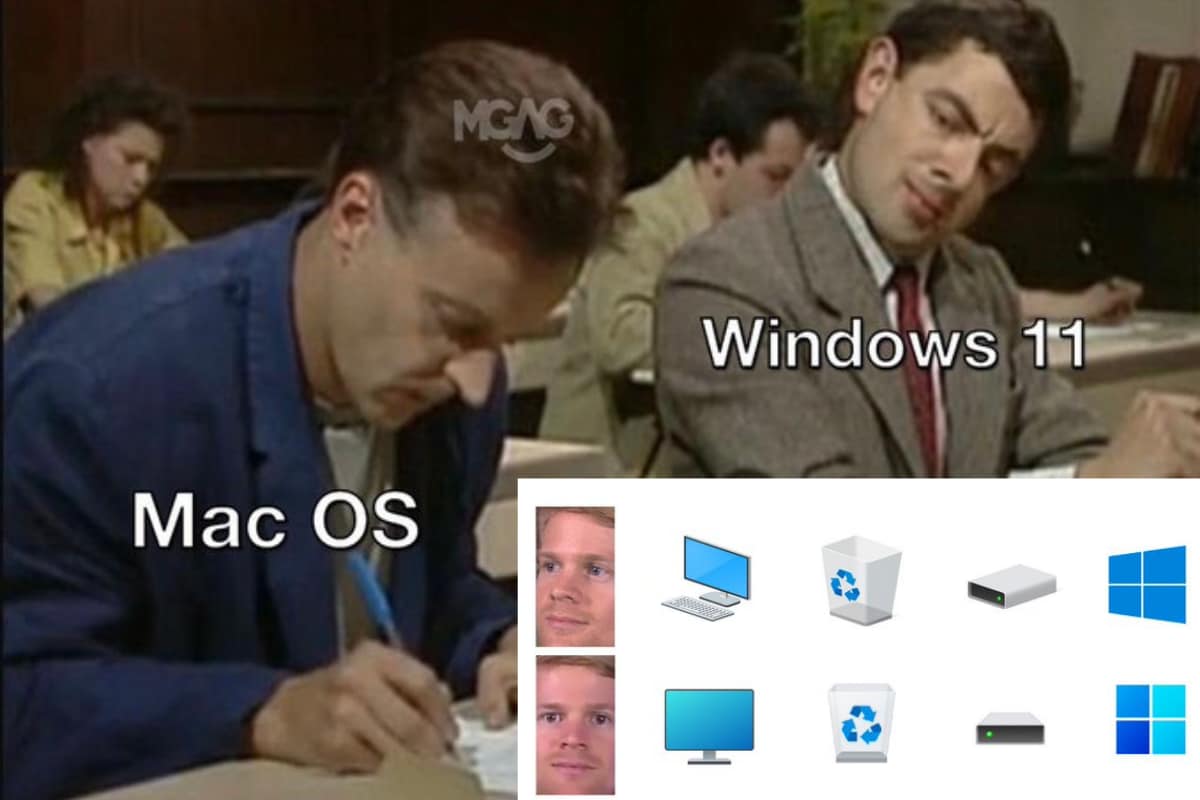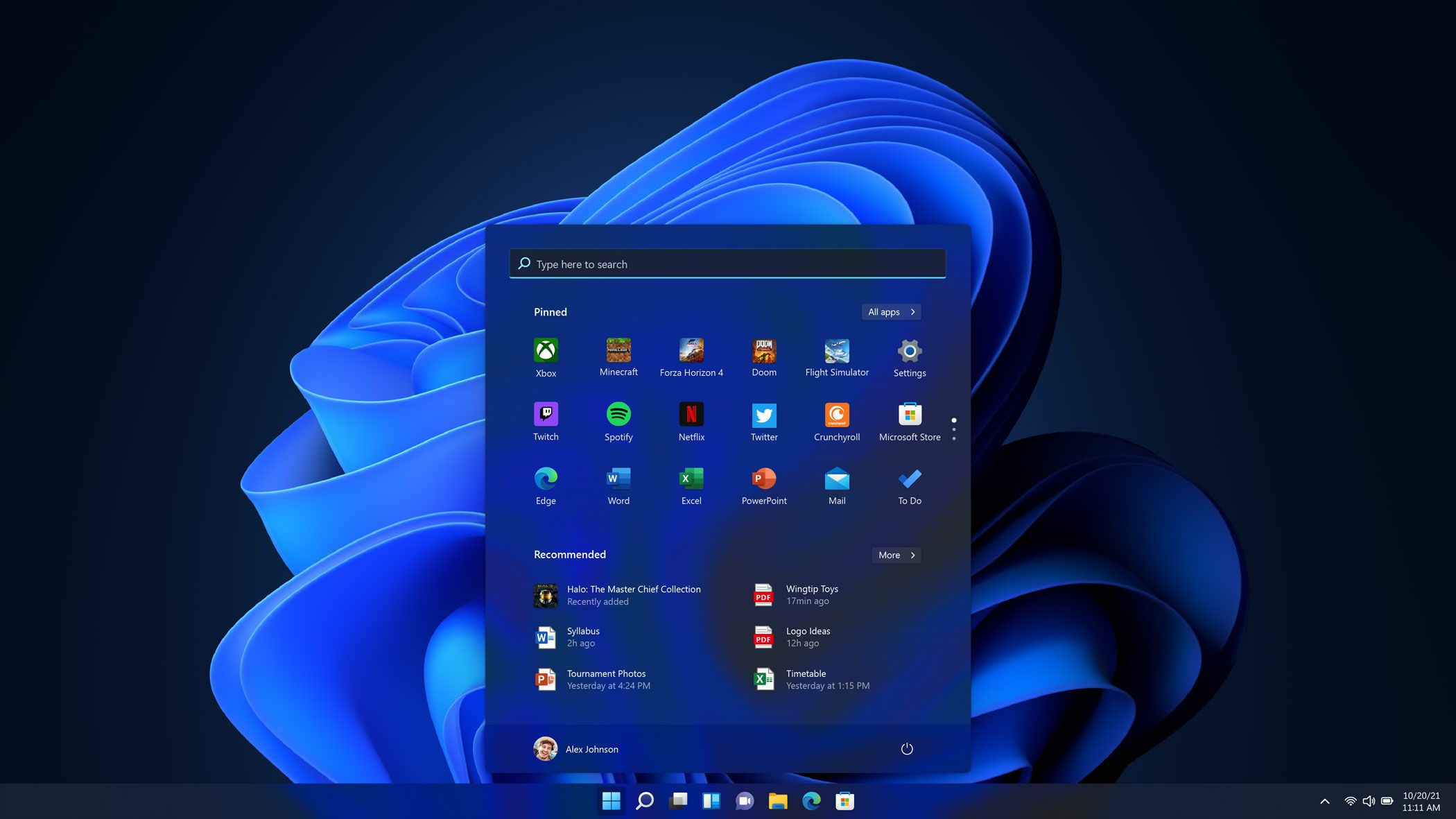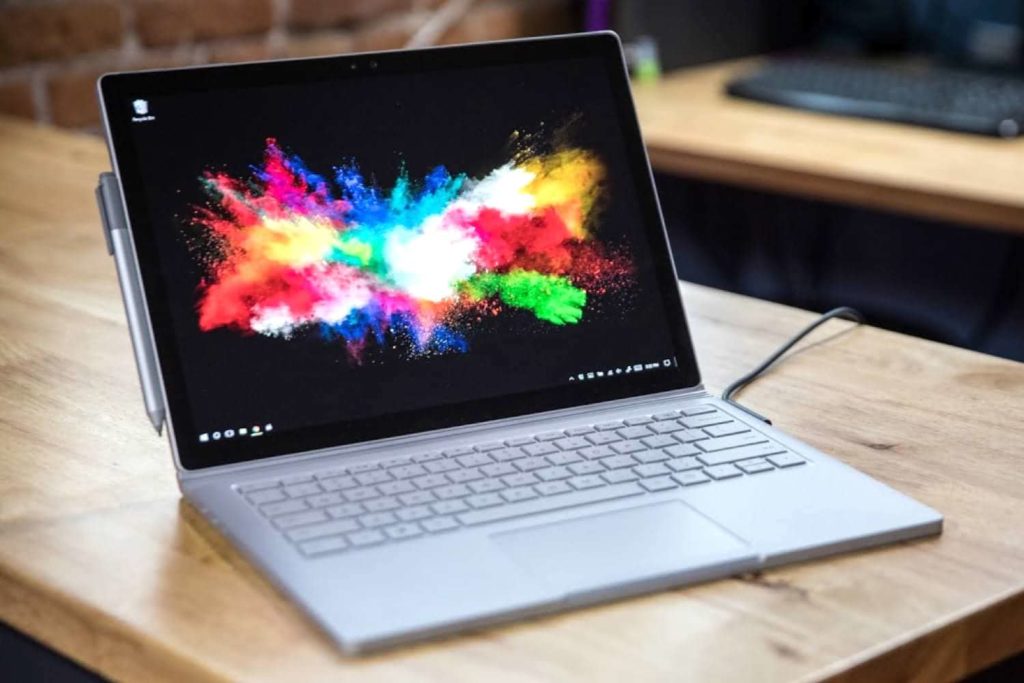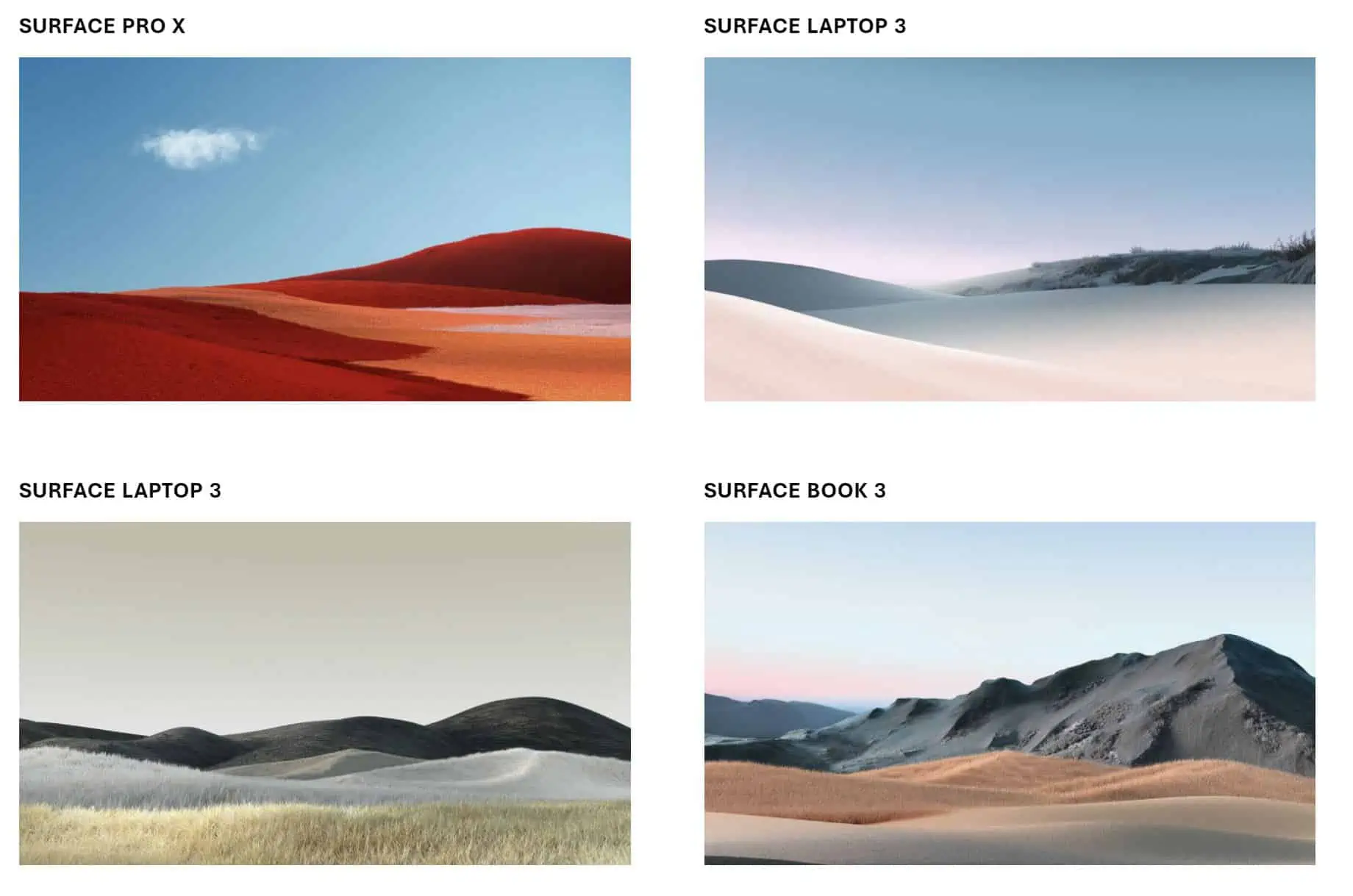Warren noted that he rarely used the Widgets panel or Microsoft Teams, citing that he preferred the weather display that later versions of Windows 10 offered, and didn't use Teams to communicate with his friends and family. He also acknowledged the expansion of Microsoft Store to include more "traditional" desktop applications. Overall, he concluded that "I wouldn't rush out to upgrade to Windows 11, but I also wouldn't avoid it. After all, Windows 11 still feels familiar and underneath all the UI changes, it's the same Windows we've had for decades." In October 2019, Microsoft announced "Windows 10X", a future edition of Windows 10 designed exclusively for dual-touchscreen devices such as the then-upcoming Surface Neo.
Legacy Windows applications would also be required to run in "containers" to ensure performance and power optimization. Microsoft stated that it planned to release Windows 10X devices by the end of 2020. Internet Explorer has been replaced by the Chromium-based Microsoft Edge as the default web browser, and Microsoft Teams is integrated into the Windows shell.
Microsoft also announced plans to allow more flexibility in software that can be distributed via Microsoft Store, and to support Android apps on Windows 11 . Cunningham concluded that "as I've dug into and learned its ins and outs for this review, I've warmed to it more", but argued that the OS was facing similar "public perception" issues to Windows Vista and Windows 8. A redesigned user interface is present frequently throughout the operating system, building upon Fluent Design System; translucency, shadows, a new color palette, and rounded geometry are prevalent throughout the UI.
A prevalent aspect of the design is an appearance known as "Mica", described as an "opaque, dynamic material that incorporates theme and desktop wallpaper to paint the background of long-lived windows such as apps and settings". Windows 11 release date is set for October 5, Microsoft on Tuesday announced — a couple of months after unveiling the new operating system. The new Windows version will bring a list of changes, including the refresh interface and a centrally placed Start menu. However, it will not include support for Android apps at the time of its official release in October. Minor complaints aside, we like to see Microsoft giving its marquee software some attention. For the last few years, the company has focused more on its Azure cloud computing services—justifiably given that business's profitability.
Windows 11 brings slick new looks, useful new tools, updated default apps, extra capabilities, and performance advances. Regardless, it's still early days for the desktop OS that's used on 1.3 billion PCs, so we look forward to Microsoft fine-tuning and perfecting Windows 11's design in future updates. For the past six years, Windows users have watched on the sidelines as the tech landscape changed at a breakneck pace.
When Microsoft's sporadic "feature updates" did arrive, they were often plagued with bugs, some so damaging the updates were suspended. And yet, despite its rocky path, Windows 10 will go down as a success, a stopgap to the mess its predecessors left behind. It brought back the traditional desktop interface, gave PC owners reliable performance, and popularized touchscreen displays and hybrid 2-in-1 laptops. Perhaps the most important thing to know about the release of Windows 11 is that we should expect it to change significantly over the next few years.
I've been using beta versions of Windows 11 for a month in the lead-up to writing this review, and it seems like every few days there's a minor new feature or redesigned app to check out. We may not see that feature fully realized in Windows until next year. The new Windows OS takes cues from its smartphone relatives, simplifying basic settings changes and making them easy to access. One click or tap in the corner of your taskbar to pull up a control panel similar to Apple's Control Center, which lets you futz with settings like brightness and volume, connectivity, and more. Windows apps now feature more aesthetically pleasing curved corners, and the Settings app has more options to change how you interact with the OS thanks to more accessibility features. New sounds and audio cues are available for blind users, and themes for people with light sensitivity or those working long hours have been updated to be easier on the eyes.
As before, Microsoft doesn't recommend installing Windows 11 on a device that doesn't meet the system requirements — though you can still do so. One thing to keep in mind is you might not get updates on a PC with an unsupported processor. When Microsoft first released Windows 11 on October 4th, the company said it expected it would offer the upgrade to all eligible devices by mid-2022. If your existing Windows 10 PC is running the most current version of Windows 10 and meets the minimum hardware specifications it will be able to upgrade to Windows 11. The upgrade rollout plan is still being finalized, but for most devices already in use today, we expect it to be ready sometime in early 2022.
Not all Windows 10 PCs that are eligible to upgrade to Windows 11 will be offered to upgrade at the same time. To see if your PC is eligible to upgrade, download the PC Health Check app. Once the upgrade rollout has started, you can check if it is ready for your device by going to Settings/Windows Updates. Windows 11 has higher technical requirements than Windows 10, is possible to install Windows 11 on devices that don't meet the minimum requirements.
Upgrading unsupported hardware to Windows 11 will require you to install the update manually using an ISO. There is a different set of minimum minimum requirements your PC will have to meet including 4GB of RAM, 64GB of storage space, and two-core 64-bit 1 GHz processor. Anyone with one of the newer chips should have no trouble installing Windows 11 via Windows Update.
Microsoft made a downloadable ISO disk image file for the beta Insider version available for installing Windows 11, allowing in-place upgrades or clean installations on a PC or in a virtual machine. A similar installation option is now available for the release version of Windows 11 via Microsoft's Download Windows 11 page. Some sources have reported that installing the OS with the ISO installer bypasses the system's hardware requirements, but that's not advisable as you may not get future OS updates if you install it on unsupported hardware. As with Windows 10, you can let the company know what you'd like to see added to the software, and you may be surprised at how often it listens.
Anyone can sign up for preview builds of the OS through the Windows Insider Program. It lets you experience new features before they're available for general release. The next major update, 22H2 is expected to add Start menu options along with some redesigned stock apps. As part of the minimum system requirements, Windows 11 only runs on devices with a Trusted Platform Module 2.0 security coprocessor. According to Microsoft, the TPM 2.0 coprocessor is a "critical building block" for protection against firmware and hardware attacks. In addition, Microsoft now requires devices with Windows 11 to include virtualization-based security , hypervisor-protected code integrity , and Secure Boot built-in and enabled by default.
The operating system also features hardware-enforced stack protection for supported Intel and AMD processors for protection against zero-day exploits. In January 2021, it was reported that a job listing referring to a "sweeping visual rejuvenation of Windows" had been posted by Microsoft. A visual refresh for Windows, developed under the codename "Sun Valley", was reportedly set to re-design the system's user interface.
The biggest change to Windows 11 is its more stringent hardware requirements. If your PC is recent, say, within the past five years, you should be alright, but older devices may be stuck with Windows 10 for the foreseeable future. That's not to say the company won't be providing security updates to Windows 10, but that's about as much as you can hope for. Since the controversial hardware decision—implemented for both performance and security reasons—Microsoft added Windows 11 support for some older computers, but the company still recommends against it.
Microsoft has promised to relaunch the PC Health Check app soon to let users check the eligibility status of their Windows 10 PCs. In the meantime, you can get the PC Health Check app in preview if you're a member of the Windows Insider programme. You can also look at Windows 11 minimum system requirements to determine whether your PC stands eligible to receive the new operating system update. While Android apps won't be available from the day Windows 11 will be released to everyone, users will get most of the promised features. These include Microsoft Teams integration, a new design with an updated Start menu, Snap Layouts, Groups, Desktops for improved multitasking, and an improved Microsoft Store app. Windows 11 brings a refreshed user interface, better performance and security, and a variety of new features.
Based on my initial experience using a review version of Windows 11 for the past two days, it's a solid upgrade with some nice benefits, but not a drop-everything-and-get-this update for Windows 10 users. Windows 11, unfortunately, ditches a couple of its best tablet- and touch-friendly features. Most importantly, you can no longer swipe in from the left to open the task-switching view, a gesture I use all the time on my Surface Go tablet. This omission is less of a big deal because you can still hit the X in the window's upper right corner as you'd do in desktop mode. Again, though, for a handheld device, the down-swipe is more direct and requires less dexterity.
There are, however, new three-finger swipe gestures to show the Task View and to minimize and app on the desktop. You can use the Task View button in the Taskbar, but it's not as immediate as a swipe of the thumb. I'd argue that switching tasks is more important to tablet users than accessing Widgets, which is what swiping your thumb now gets you. Windows Widgets are back in Windows 11, accessible via the dock, with Microsoft touting AI-powered dynamic features that enable widgets, as with the Start menu, to change depending on the apps you're using and the time of day.
On the touchscreen, you can slide from the left on the desktop to have widgets appear. Windows 11 features a new version of the Microsoft Store, with a new interface and a broader selection of apps. This new store is meant to have an easier to use and better-curated digital storefront. It should also be faster, "We rebuilt for speed", said Panos Panay during the Windows 11 announcement. So far our experience of it is much the same as the rest of Windows 11...
But it's also still mostly filled with apps you'd likely download direct from your browser, or wouldn't want to touch at all. Original equipment manufacturers can still ship computers without a TPM 2.0 coprocessor upon Microsoft's approval. Some third-party software may refuse to run on unsupported configurations of Windows 11.
Windows 11 SE was announced on November 9, 2021, as an edition exclusively for low-end devices sold in the education market, and a successor to Windows 10 S. It is bundled with applications such as Microsoft Office for Microsoft 365, Minecraft Education Edition, and Flipgrid, while OneDrive is used to save files by default. Windows 11 SE does not include Microsoft Store; third-party software is provisioned or installed by administrators.
The "Widgets" button on the taskbar displays a panel with Microsoft Start, a news aggregator with personalized stories and content (expanding upon the "news and interests" panel introduced in later builds of Windows 10). Microsoft Teams is similarly integrated with the taskbar, with a pop-up showing a list of recent conversations. Instead of the somewhat clunky tiling system found in the previous iteration of the iconic taskbar, Windows 11 peels away the cruft and gives you what you need. In my case, it's a list of recently accessed files along with a tray of pinned apps for easy access, with a universal search bar at the top for easy web (or on-device) searching. The clean lines and use of widgets to display information like weather, news, and photos is a welcome change of pace from the busy screen in Windows 10.
Depends on how you feel about some of the biggest changes coming to Microsoft's primary OS. Windows 11 is being hyped by Microsoft as the next big thing, and expectedly so, because at the time of the launch of Windows 10, the company had said that that would be where the Windows lineup would end. And then, after a hiatus of six years, Redmond launched Windows 11, which is essentially redesigning everything, including the start menu. The start menu is no longer going to be at the corner of the task bar, mostly in the bottom left corner . Basically, the entire set of apps and icons would now move to the centre of the task bar, instead of remaining to the left side.
Windows 11 will be provided as a free update to all eligible devices that are currently running Windows 10. Eligibility for automatic upgrade is based on certain minimum hardware requirements. If the Microsoft Surface family of products isn't your style though, other brands like Dell, Asus and HP have all released pages online that specify what devices are Windows 11 ready. Note that many won't come with the new operating system installed, but as they all meet the minimum system requirements, you can simply buy the laptop or 2-in-1 as normal and then update it yourself. Windows 11, the first major Windows release since 2015, builds upon its predecessor by revamping the user interface to follow Microsoft's new Fluent Design guidelines.
The redesign, which focuses on ease of use and flexibility, comes alongside new productivity and social features and updates to security and accessibility, addressing some of the deficiencies of Windows 10. With the PC Health Check app soon, users can check to see if their current PC will be eligible to upgrade. Microsoft commercially released Windows 11 on Oct. 4, and noted that it's a free upgrade for Windows 10 systems that meet the new operating system's minimum requirements. Individuals with Windows 10 systems that pass Windows 11's stringent hardware requirements will be offered the new OS via the Windows Update mechanism. It'll replace the underlying Windows 10 bits with Windows 11 bits via an automated "in-place upgrade" approach.
However, it's possible for users to decline the upgrade and continue with Windows 10. After weeks of leaks and hype, Microsoft today officially announced Windows 11, the next version of its desktop operating system. One of the most notable additions in this version of Windows is in the area of multitasking. Like in macOS with Spaces, users can create multiple virtual desktops for different sets of apps. In addition, a new Snap Assist feature appears when the mouse pointer hovers over the maximize button, and offers up several window layouts that app windows can snap to.
These layouts are remembered by Windows and appear as Snap Groups in the taskbar. Microsoft is all set to release Windows 11 OS on October 5, but the update won't include Android app support. The ability to natively run Android apps on a PC is one of the biggest features of Windows 11 and it seems that users will have to wait a little more for that. For details, seeMicrosoft's Security Update Guide and the November 2021 Security Update notes. It also fixes a bug that causes improper rendering of some user interface elements or when drawing within some apps. And it makes quality improvements to the servicing stack, which is the component that installs Windows updates.
If you haven't seen it through Windows Update yet, you can still get the final build through the Beta and Release Preview channels of the Windows Insider Program, as long as you have a compatible PC. The Dev channel is already running rs_prerelease builds to test out new features, so be careful with that. If you enroll in the Dev channel, you'll have to do a clean installation of Windows 11 to roll back.
And of course, you can also get it on a bunch of new laptops and desktops like the Surface Laptop Studio and Surface Pro 8. For example, Windows 11 has new Contrast themes, redesigned closed caption themes, and AI-powered Windows Voice Typing. The new OS also adds APIs for programming assistive apps, and even the Windows Subsystem for Linux now has accessibility options. Windows 11 has a new Widget panel, which shows you tiles for news, weather, stock quotes, sports scores, and more. It's not entirely new since the News and Interests Taskbar popup that arrived in Windows 10 recently is exceedingly similar. I've gotten used to it being in the Taskbar in Windows 10, and thankfully a Windows Insider preview build shows that Microsoft is considering bringing back this useful button.
To see the same info in Windows 11, you have to click on the Widgets icon in the Taskbar. In addition to Microsoft-produced first-party tiles, third-party developers can offer content through Windows 11's widgets, too. Touch screen users can easily swipe in from the left to open them and you can full-screen the widget panel if you want a bigger view. File Explorer is a good example of Windows 11's new look, particularly its updated left panel controls and folder icons. Note the simplified ribbon along the top, which is far less busy and distracting than the previous File Explorer's.
Is Microsoft Going To Release Windows 11 The New button at the top left works for new folders or documents supported by your apps, and the same viewing options for files are available. The overflow menu offers file compression, selection, and Properties options, as well as the old Folder Options dialog. The right-click context menus, which have grown longer and longer over the years, get shorter, smarter, and clearer in Windows 11. Pinned app buttons (they're larger than icons but smaller than Windows 10's tiles) are at the top of its panel. The Start menu's new mini-tiles are still good for touch input, but you lose info that live tiles offer, annoying as those could sometimes be. Another quibble I have with the new Start menu is that it's harder to get to the All Apps view than in Windows 10.






























No comments:
Post a Comment
Note: Only a member of this blog may post a comment.